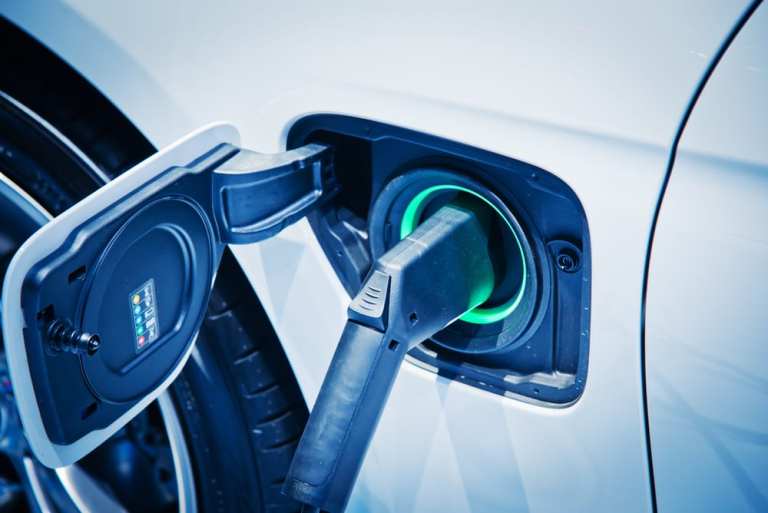
While the electric car has long been touted as the future of transportation, it bears remembering that while electric vehicles (EVs) have been cool in the post-Tesla world, they are hardly new. The first electric vehicles started driving on America’s streets in the early 1890s and by 1900, about one-third of vehicles were electric and EV cars were a major competitor for those powered by the internal combustion engine. But internal combustion engines evolved faster — with better transmissions systems that made them drive faster, and the ability to hold more fuel than an EV could hold a charge, thus making them capable of driving much, much further.
As a result, the internal combustion engine sizzled and went on to become a cornerstone of the industrial era — and the electric car, well, didn’t.
Almost 100 years later, however, EVs got another bite at the apple. Between 1996 and 1999, General Motors (GM) began mass-producing their first electric car — the EV1 and offering it for lease in California and Georgia. And while there is a lot of debate about the death of the EV1 and more than a few conspiracy theories about it, most agree that the car had the same basic problem they had 100 years ago. It didn’t drive far enough and couldn’t be easily refueled. EV1 only went 75-80 miles on a full charge and needed several hours to get back up to full charge. GM stopped producing the car and when the leases came due, they took them all back.
But electric vehicles are an innovation that has a habit of coming back.
In the years since Tesla has emerged and become a favored status symbol in some circles, the latest round of electric cars has solved or least greatly mitigated some of the problems that have historically held back EV ignition.
Battery life is longer, and thus range has improved — a Tesla Model S, for example, can go 200-300 miles on a single charge. But charging speed remains an issue. If one were to plug a car into a standard wall outlet, they could look forward to charging times north of 52 hours. Using a 240-volt outlet (generally with a specific adapter) can cut that time down, but charging a car to full is still likely to be an overnight affair. Fast charging is available: the Tesla Superchargers that are showing up at an increasing number of gas stations nationwide can achieve a full charge in about an hour so long as the EV plugged into it is properly configured.
The problem is that while there are more Superchargers than ever, there still aren’t all that many of them nationwide — particularly when one compares them to gas stations. Worldwide, Tesla has a little over 12,000 Superchargers across North America, Europe and Asia combined. Meanwhile, there are over 168,000 gas stations in the U.S. alone. Tesla advertises having more than 90 percent of North America covered with its Superchargers — but it seems safe to say that gas stations’ coverage is a bit more complete.
And as long as EV stations range is limited, and the ability to efficiently recharge is still a work in progress, electric vehicles face the same problem they’ve been working to overcome for over a century: Gas-powered cars can literally go the distance and electric-powered cars are still a coin toss depending on the location to which one is driving.
But the U.S. government might be moving to take away the petrol stations’ competitive edge and give EV vehicles a cleaner path to ignition, by making a charging station much easier to find. U.S. Representatives Andy Levin of Michigan and Alexandria Ocasio-Cortez of New York have released new legislation they are calling the “EV Freedom Act” that calls for the creation of a network of high-speed charging stations within five years along the public roads of the national highway system.
“This is the infrastructure bill that we need to be rallying around,” Ocasio-Cortez said in a press conference announcing the proposed legislation. “A lot of naysayers will say, ‘They are trying to get rid of cars.’ Well, we’re not trying to get rid of cars. We’re trying to actually advance and improve our fleets … We have to go electric.”
And indeed, Levin moving to “get rid of cars” would truly be a surprise since his district in suburban Detroit is full of autoworkers. But the effort has gotten the blessing of the United Auto Workers union, who believe that a push for more charging stations will ultimately stimulate demand for electric vehicles among consumers. That, in turn, will boost demand for autoworkers to build those vehicles.
The bill, as reviewed by Reuters, noted that lack of available charging is a significant barrier to adoption among consumers and that private industry — like Tesla’s network of superchargers — will not be able to meet the need to push consumer demand. Because minus those stations, Levin noted, the demand isn’t getting a chance to materialize because consumers are too concerned with a basic performance issue.
“There is just no way that we will get to broad scale adoption of electric vehicles until we crush range anxiety and then it will happen precipitously,” Levin told Reuters. The bill will come with costs, which Levin said will be substantial. But, he noted, that jobs created by the legislation will outweigh those costs.
And the Ocasio-Cortes/Levin Bill was one of two introductions this week focused on expanding access to EV charging stations. Representative Yvette Clark of New York introduced a bill that would focus increasing access to EV charging stations in low-income and disadvantaged communities.